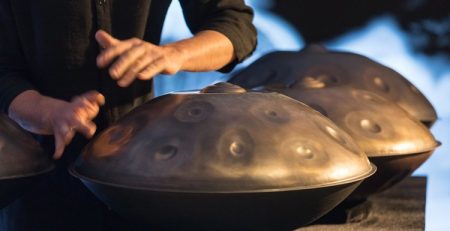The handpan is a relatively modern musical instrument that has been gaining popularity in recent years. Its unique and mesmerizing sound has captivated millions around the world, and its short but fascinating history has made it an intriguing instrument to study. In this blog post, we’ll be discussing the history and evolution of the handpan, and how it has become the modern instrument it is today.
The handpan was created relatively recently, in 2000, by the Swiss musical instrument maker PANArt. The instrument was inspired by the steelpan, an instrument from Trinidad and Tobago, created in the mid-1900s. PANArt sought to create an instrument that could be tuned precisely and with a sound that was perfect for recording in a studio. They achieved this by using sheets of steel and a hammering technique that allowed for exact tuning.
The handpan quickly began to gain popularity because of its unique sound, which some described as heavenly. With its haunting melodies and delicate sound, the handpan rose to fame in the 21st century and soon became a popular instrument among music enthusiasts.
Since it was created, the handpan has continued to evolve. PANArt has created various instruments, from the Hang, to the Gubal, to the Halo, all of which are variations on the original handpan. Each instrument is designed to have a specific sound and is tuned differently to achieve this. There are also various sizes and shapes available, allowing for a range of musical possibilities and creative expression.
These days, the handpan is the preferred instrument for many musicians and studios. Its ease of use, portability, and beautiful sound make it ideal for recording and performances. The handpan is also commonly used in meditation and yoga classes, due to its ability to create a calming atmosphere.
Overall, the handpan is a relatively new instrument that has made a huge impact on the music world. Its unique sound has charmed millions around the world and its versatility and portability make it a great instrument for almost any environment. The handpan is sure to continue its evolution in the years to come, and we can’t wait to see what comes next.



